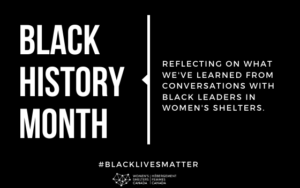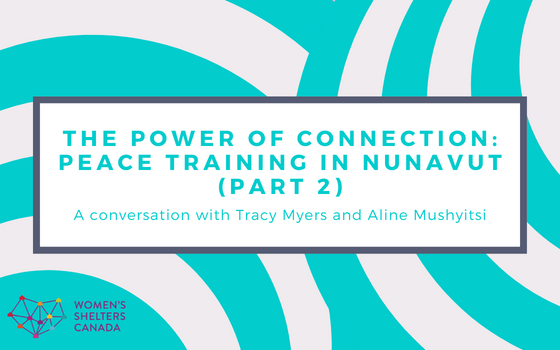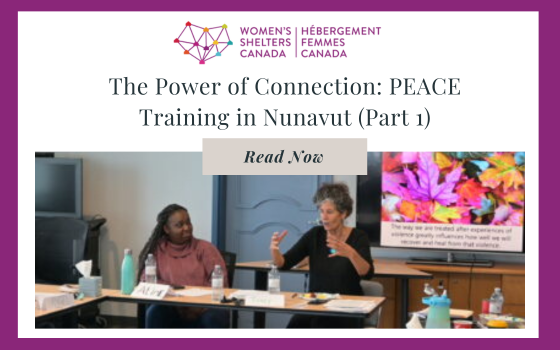During Black History Month, I had the privilege to digitally meet a few Black women leaders in violence against women (VAW) shelters throughout Canada. My goal was to have a meaningful discussion on what it’s like for Black women to work in this sector and how shelters can better serve Black women and children fleeing violence. As someone new to this sector, I didn’t know much about what was being done to support, connect, and educate Black women on VAW. This can be attributed to the fact that there isn’t a lot of in-depth research on violence against Black women. Knowing this, I looked into the data collected by WSC when we distributed COVID-19 federal funds to shelters across the country and relied on the experiences of women working in the field to gain more insight into the current situation. 
While Black women make up 3.5% of the female population in Canada, women’s shelters reported that they anticipated 9% of women served during the pandemic would be Black women. But in Canada’s metropolitan areas, the number is even larger at 28%. As the pandemic continues to unfold, Black women are disproportionately represented in shelters across the country.
When I shared these stats with Carla Neto, Community Programs Manager at Women’s Habitat in Etobicoke, ON, she said, “If Black women had the economic power to have different options, I don’t think we would be seeing as many Black women in shelters staying for long periods. When we talk about choice and decision making, we make the mistake of thinking that all women have the same options – but not all women are created equal.”
Most Black women are not afforded the same opportunities as other demographics due to a long history of systemic racism and colonization. For some Black women, shelters are the only option they have to escape abuse.
In some regions in Canada, women of colour feel a lack of safety in shelters due to a history of institutionalized racism. In the wake of the BLM movement, many organizations recognized that one solution to this problem was more diversity and inclusion training for staff. But after talking to these Black women leaders, we all concluded that training is not enough. There needs to be a more humanistic and empathetic approach that includes rewriting our culture, unlearning biases, and learning how to sit with the discomfort we all feel when talking about racism, sexism, homophobia, classism, etc.
More Black representation is part of the process of making shelters a safer place for Black women.
Hawa Dumbuya-Sesay, Executive Director of the YWCA NWT, explained that “having more people of colour in shelters helps Black women feel safe and comfortable to share their struggles. Even though we have different cultures, we always have something in common as Black people.”
VAW Shelters are a reflection of our society and, as a sector created by women for women, we need to recognize that women are diverse and have different needs. When Black women are seeking services, we have different concerns like whether shelters understand our culture, food, language, immigration status, and hygienic needs. There is also a fear that, by seeking help, we will perpetuate negative stereotypes of the Black community.
Executive Director Lisa Ogbole from Imani’s Place in Allison, ON, said it best: “When these women seek help…they need to be shown love and not be castigated and seen as fraudsters for seeking services that are otherwise available to everyone. The workers should help them feel comfortable and reassure them that they will get better. Also, we are a unique kind of people; we like to get our hair done and love our cultural food.”
Shelters need to intentionally reach out to racialized communities and hire women of colour to build trust so Black women do not have to think twice about using these life-saving services.
Black women who are educated and successful like the women I interviewed are not immune to racial biases. No matter how much experience we have or how qualified we are, our capabilities will always be questioned. Black professionals in this sector still receive comments on how surprisingly eloquent and educated we are. Or how, at first meetings, Black women aren’t believed to be the manager or executive director of their shelters; they’ve been assumed to be housekeepers and assistants, positions stereotypically held by people of colour.
When reflecting on what shelters can do, Executive Director of The Redwood in Toronto, Abi Ajibolade, said, “I think a good place to start is to look inward and reflect on our role; that is the part we as women’s shelters play in perpetuating systemic oppression. Whether it is by having exclusionary policies or having a heavy reliance on law enforcement…there is a good reason for this deep-seated fear and distrust.”
One of the big take-aways from talking to my colleagues is that there is still a lot of work to be done and we have to keep the conversation going. Regardless of what month it is, we need to continuously share Black experiences and act against discrimination.
Women’s Shelters Canada is committed to continuing this conversation and highlighting Black experiences in this sector – we challenge you to do the same.




Leave A Comment
You must be logged in to post a comment.